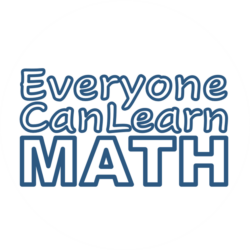A recent conversation with a group of friends got me thinking about how I was taught to do calculations compared to how my children are being taught. I’m sure we have all heard the debate on “new math” versus “old math.” I don’t think there is such a thing, to be honest, but I do think there has been a distinct shift in the strategies students are being taught in elementary school for computations.
This is the problem my friend brought to our group of friends (all secondary educators of varying subjects, all very educated and intelligent humans):
One of our friends said they actually picture the vertical algorithm for addition in their minds – adding the 8 and 7 to make 15 and carrying the one. This is how I would have done this addition in my head when I first began my teaching career – I have an honours degree in Mathematics and Statistics, plus many more additional qualifications along with my teaching degree. I don’t think it’s uncommon for people in our generation to add like this in our minds. A lot of focus was put on the vertical algorithm when I was in elementary school.
When I started teaching, I learned so much from my students – and I continue to learn from them each day. Early on in my career, I started to notice some students could compute in their heads faster than I could. Trust me, I know speed does not necessarily imply mastery, but I was impressed with some students’ mental math abilities. I would ask how they calculated a sum, for example, and guess what – never did they use the vertical algorithm. So my quest to improve my own mental math began.
How have I improved my mental math strategies? I attend regular PD online and learn from the best mathematics educators in North America. I follow them on social media. And now I pay attention to how my own children are learning math in school.
How would I add these two numbers? I am happy to say I no longer picture the vertical algorithm in my mind. For me, I would first add 8 + 7 to get 15. Then I would add 20 + 40 to get 60. Finally, I would add together 60 + 15 to get 75. These are the numbers that I think are easiest to “hold” in my head. For some people, it is very difficult to hold numbers in your head without writing them down. This is an obstacle to mental, but it is a real visual block that some people face. With practice, some people get better at knowing what numbers are “nicer” numbers that they can hold better in their heads.
I also notice that our international students often have very strong mental math skills – capable of taking square roots of numbers, for example. This shows me that I still have a lot of room to grow in my mental math learning.
For fun, I asked my children how they would add these two numbers without using paper. This is what they said:
8-year-old:
6-year-old:
Keep in mind that the 8-year-old has been taught mental math strategies in school already. The 6-year-old is a very keen learner and we are a family that talks math daily, so these are conversations our children are used to having.
Regular math conversations are something you and your family can work toward, but it doesn’t happen overnight. And I also want to stress that our math conversations are short and sweet. I don’t want to give the illusion that we do math for hours a day. We do not. Usually, the conversations are only a few minutes long. This is long enough to create normalcy around discussing numbers and math at home.
These strategies are definitely not new. I am thrilled to see that our children are being taught to work with numbers differently than I was taught. Let’s keep encouraging this way of working with numbers, instead of arguing about which is best. I think it’s best to have a multitude of strategies so our children can choose the one that works best for them.
Keep spreading the math love <3
![]()

One Reply to “Being Open-Minded to Mental Math”
Comments are closed.